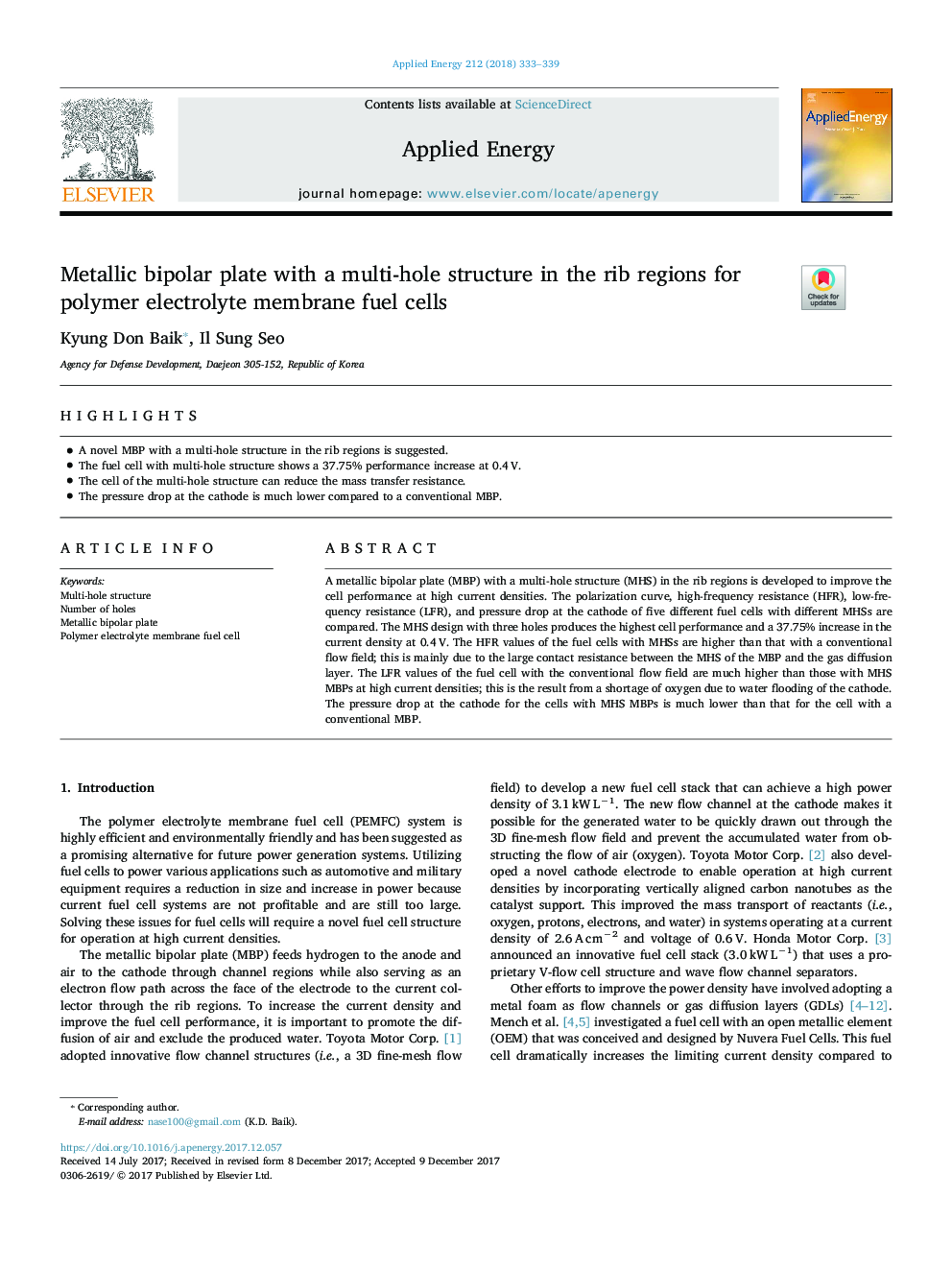| Article ID | Journal | Published Year | Pages | File Type |
|---|---|---|---|---|
| 6680918 | Applied Energy | 2018 | 7 Pages |
Abstract
A metallic bipolar plate (MBP) with a multi-hole structure (MHS) in the rib regions is developed to improve the cell performance at high current densities. The polarization curve, high-frequency resistance (HFR), low-frequency resistance (LFR), and pressure drop at the cathode of five different fuel cells with different MHSs are compared. The MHS design with three holes produces the highest cell performance and a 37.75% increase in the current density at 0.4â¯V. The HFR values of the fuel cells with MHSs are higher than that with a conventional flow field; this is mainly due to the large contact resistance between the MHS of the MBP and the gas diffusion layer. The LFR values of the fuel cell with the conventional flow field are much higher than those with MHS MBPs at high current densities; this is the result from a shortage of oxygen due to water flooding of the cathode. The pressure drop at the cathode for the cells with MHS MBPs is much lower than that for the cell with a conventional MBP.
Related Topics
Physical Sciences and Engineering
Energy
Energy Engineering and Power Technology
Authors
Kyung Don Baik, Il Sung Seo,
